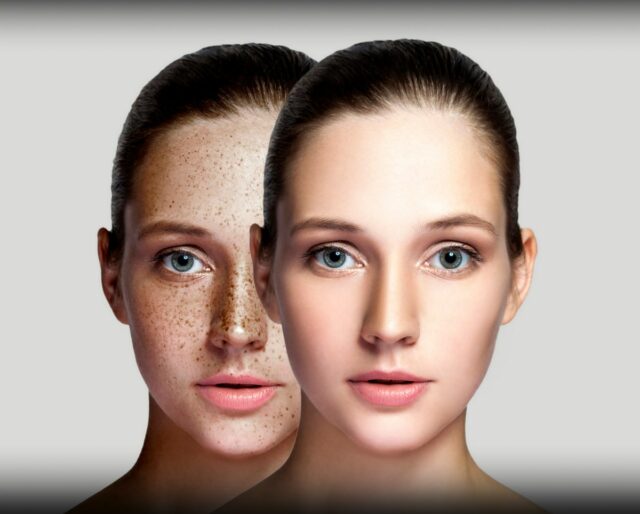International Skin Pigmentation Day, observed on May 25, aims to increase global awareness of the importance of avoiding and treating this disorder. Uneven skin pigmentation (also known as hyperpigmentation) is a frequent skin problem. Dark spots, also known as age spots or sun spots, or dark patches of skin, emerge often on the face, hands, and other regions of the body that are exposed to the sun on a regular basis. Sun exposure, medications, and hormonal changes are the most common causes of dark patches.
History of International Skin Pigmentation Day
The term ‘hyperpigmentation’ refers to patches of skin that have uneven pigmentation. Hyperpigmentation causes the skin to seem uneven by appearing as darkening patches or blotches. Hyperpigmentation is at the root of skin diseases such as post-inflammatory hyperpigmentation and melasma, and the spots are referred to as age spots or sunspots. This skin disorder has three common types: pigment spots, melasma, and post-inflammatory hyperpigmentation.Sun exposure causes pigment spots like age spots (sometimes referred to as sunspots). As a result, they are most commonly found on exposed body regions such as the neck, face, décolleté, arms, and hands. Small, darker spots on the skin are common.Melasma, also known as chloasma, is a disorder in which bigger spots of hyperpigmentation appear on the face. Melasma affects both men and women; however, it is more frequent in women and is considered to be driven by hormonal fluctuations. Melasma, also known as “the mask of pregnancy,” affects 10–15 percent of pregnant women and 10–25 percent of women who use oral contraceptives.When a skin lesion or trauma heals, a flat patch of discoloration remains. This is known as post-inflammatory hyperpigmentation. It’s frequent among acne patients, and it’s also a side effect of cosmetic operations like dermabrasion, laser therapy, and chemical peels.
International Skin Pigmentation Day timeline
The oldest literary mention of a skin pigmentation condition, most likely vitiligo, is published around 2200 B.C.
The medical reason for skin pigmentation, melanocyte, is discovered.
Sunscreen is invented by a cosmetics company, L'Oréal.
The epidermal melanin unit is introduced, along with a description of the melanosome's ultrastructure and melanosome transfer.
International Skin Pigmentation Day FAQs
Can pigmentation be removed permanently?
There are many treatments that can remove existing pigmentation, but they may not be a permanent cure. To keep pigmentation away for the long term, you will need regular skin maintenance.
Which foods can cause skin pigmentation?
Soy products, black beans, flaxseed, and chickpeas are some of the foods that contain hormones that may cause skin pigmentation.
Which foods help prevent skin pigmentation?
Milk, buttermilk, and sour milk have all been shown to effectively lighten skin discoloration, thanks to the ingredient — lactic acid.
How to Observe International Skin Pigmentation Day
-
Visit your dermatologist
Book an appointment with your dermatologist for a skin check-up. Just like how you need to take care of the other parts of your body, it is equally important to take care of your skin and prevent it from damaging.
-
Spread awareness about skin pigmentation
Skin pigmentation is nothing serious but many people are not aware of how to protect their skin from it. This skin condition can manifest due to not just hormonal changes but also prolonged exposure to the sun without the use of any sunscreen.
-
Fight the prejudice
Although skin pigmentation is very common, people still feel targeted and body-shamed because of it. One way to shut down the haters is to accept our skin as it is and feel proud of it.
5 Facts About Skin Pigmentation
-
It is more common than you think
Hyperpigmentation affects one in three women around the world.
-
Be careful of sun exposure
The easiest way to prevent skin pigmentation is to avoid exposure to the sun.
-
Perfumes can also be the problem
Your favorite perfume could also cause skin darkening.
-
Skin can respond negatively to stress
It's not just sun exposure but also stress that can cause skin problems like acne which can lead to skin pigmentation.
-
Damage may take time to appear
Your skin might already be damaged by the sun or other factors even though the signs are not visible to you; sometimes the pigmentation takes time to show up on the surface.
Why International Skin Pigmentation Day is Important
-
An opportunity for skin health awareness
This day provides an opportunity to talk about the importance of skin health and understand the causes of skin pigmentation to fight them. Consider the day as a reminder and revise your skincare routine.
-
It helps break stereotypes
International Skin Pigmentation Day offers us a chance to help fight stereotypes and normalize uneven skin. Do your part and stop people from criticizing others for having different skin conditions.
-
It makes one feel secure
People without clear skin often feel less confident about their appearance. This day is observed to not only create awareness but also make people understand that this is a treatable and manageable medical condition.
International Skin Pigmentation Day dates
| Year | Date | Day |
|---|---|---|
| 2023 | May 25 | Thursday |
| 2024 | May 25 | Saturday |
| 2025 | May 25 | Sunday |
| 2026 | May 25 | Monday |
| 2027 | May 25 | Tuesday |




























